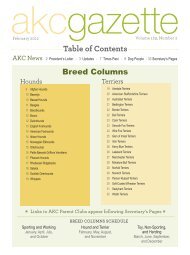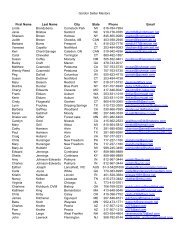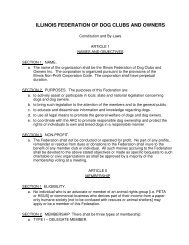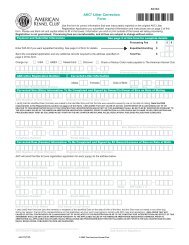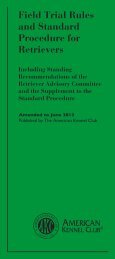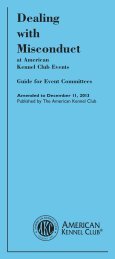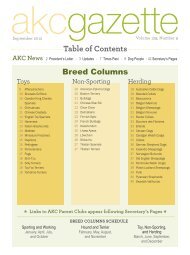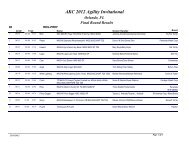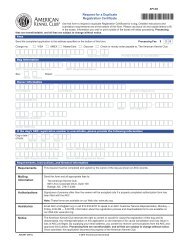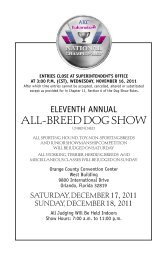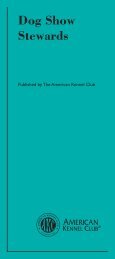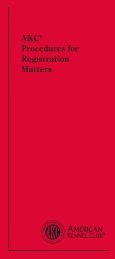You also want an ePaper? Increase the reach of your titles
YUMPU automatically turns print PDFs into web optimized ePapers that Google loves.
• Jumping over or passing through the wing of a jump in the correct<br />
direction<br />
• Jumping over a contact obstacle from side to side, jumping over a tunnel,<br />
or jumping over without touching the table<br />
• Going under the top bar of a bar jump (in the correct direction)<br />
• Passing between the tire and the frame (in the correct direction)<br />
• Entering the broad jump correctly but exiting through the side<br />
• Entering through the side of the broad jump and exiting the other side or<br />
back<br />
• Exiting the entrance of a tunnel without going completely through the<br />
tunnel<br />
• Going under or jumping over the pause table without touching it (see<br />
diagram 5.4.5-B2).<br />
A dog is not subject to a refusal on the second jump of a 270 degree turn until<br />
it has placed all 4 paws on the proper approach side of the second jump (see<br />
diagram 5.4.3-D).<br />
If a dog is given a refusal for stopping in front of an obstacle, it cannot be<br />
given another refusal for just standing there. The dog is not subject to another<br />
refusal until it makes some movement forward. Furthermore, a dog that stops<br />
in front of an obstacle, then turns back on its path is assessed one refusal since<br />
there has not yet been movement forward toward the intended obstacle.<br />
Run-outs (R):<br />
A run-out is also a refusal. A run-out occurs each time the dog passes the<br />
run-out line of an obstacle without engaging that obstacle. Whether the dog<br />
was approaching that obstacle or has even seen it is of no consequence.<br />
The run-out line is intended to mark the point at which a dog can no longer<br />
properly engage the obstacle without turning back on its path. It is defined as<br />
a line that passes across the front edge of all obstacles except the pause table,<br />
weave poles, and contact obstacles.<br />
• On the weave poles, the run-out line is interpreted as passing to the left<br />
and perpendicular to course flow of the first pole and to the right and<br />
perpendicular to course flow of the second pole.<br />
• On the pause table, the run-out line passes across the back of the table.<br />
The back is determined by the natural flow of the course. Thus, it is<br />
possible that dogs may jump on the table from three different sides (the<br />
front and the two sides) without incurring a run-out. To better define the<br />
run-out line, the front face of the table should be square to the expected<br />
dog’s path.<br />
• On the dog walk, the run-out line passes through the junction where the<br />
ascent ramp and the horizontal, middle ramp meet.<br />
56




